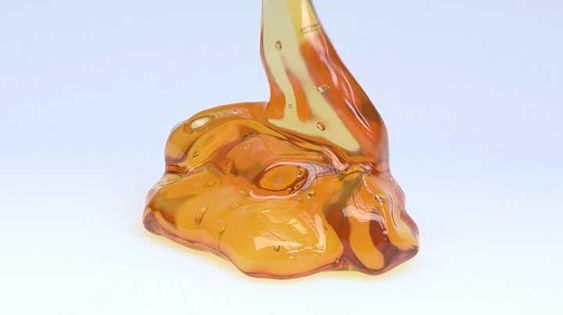What is a liquid’s viscosity?
Simply put, viscosity is a term that describes the resistance of a liquid to flow. It is a measure of a moving fluid’s internal friction. The coherent forces between the fluid’s molecules cause the viscosity of a liquid. Fluids with high viscosity values resist motion because their molecular structure gives a lot of internal friction.
Liquids will flow easier at low viscosity values. Alcohol and water might be the most familiar examples of these kinds of liquids. Contrastingly, fluids with high viscosities will move and flow much slower such as lotion, gel, honey, peanut butter and other types of thick liquids.
Also Read 10 Amazing Uses Of Organic Oils For Body Scrubs To Try!
Types of Liquid Viscosities
Below are the three major terms used in describing a liquid’s viscosity.
Water-Thin Liquids
Water-thin liquids are free-flowing liquids like colognes and perfumes aside from water of course.
Semi-Viscous Liquids
These are a little thicker compared to water-thin liquids. Examples are soybean oil and maple syrup.
Viscous Liquids
Viscous liquids are those that do not easily move or flow such as pastes and hair gel.
While the above terms are good ways to describe the viscosity of a liquid, there are times that you need to be more specific about these values. The measurement used in describing a fluid’s viscosity is called centipoise (CPS) which will be defined in the next section.
Defining Centipoise
Viscous liquids are those that do not easily move or flow such as pastes and hair gel.
While the above terms are good ways to describe the viscosity of a liquid, there are times that you need to be more specific about these values. The measurement used in describing a fluid’s viscosity is called centipoise (CPS) which will be defined in the next section.
Approximate Centipoise Ratings of Common Products
Below is a table of the centipoise ratings at room temperature of the common products you see in the market. The materials are arranged from the lowest centipoise value to the highest ones.
| Material | Centipoise Viscosity Value (CPS) |
| Water | 1 |
| Milk | 3 |
| Perfumes/Colognes | 1-7 |
| Liquid Ink | 25 |
| Corn Oil | 72 |
| Motor Oil (SAE 10) | 85-140 |
| Motor Oil (SAE 20) | 140-420 |
| Motor Oil (SAE 30) | 420-650 |
| Motor Oil (SAE 40) | 650-900 |
| Hand and Body Lotions | 700 |
| Shampoo | 1000 |
| Castor Oil | 1000 |
| Honey | 10000 |
| Chocolate | 25000 |
| Ketchup | 50000 |
| Petroleum Jelly | 64000 |
| Mustard | 70000 |
| Sour Cream | 100000 |
| Tomato Paste | 190000 |
| Peanut Butter | 250000 |
Now you know the viscosity values of the materials above. Do remember that the lower the centipoise value is, the more free-flowing the liquid will be. On the other hand, the higher a liquid’s viscosity is, the slower harder it flows.
How to Measure Viscosity
You can easily measure a liquid’s general viscosity value using a simple technique as described in the following sections.
Things You Will Need
The tools and processes you will be needing are just basic ones. All that is needed before you can measure your liquid’s viscosity level are the following:
- A plastic or glass tube
- Marble or steel ball
- A stopwatch
- Your liquid product
Steps For Measuring Liquid Viscosity
- Fill the liquid into the plastic or glass tube.
- Get a marble/steel ball and drop it into the tube.
- Take note of the time the ball will take before it drops to the tube’s bottom.
Steps For Measuring Liquid Viscosity
- Fill the liquid into the plastic or glass tube.
- Get a marble/steel ball and drop it into the tube.
- Take note of the time the ball will take before it drops to the tube’s bottom.
Interpreting The Results
If the ball drops faster, then your liquid’s viscosity rating is lower. The liquid’s centipoise rating is higher otherwise. This is the simplest method for measuring liquid viscosity which you can try at home.
What is Viscometer?
A viscometer is a measuring device that you can buy to precisely determine the necessary force to move across a certain liquid.
Several kinds of viscometers exist and are used in determining different viscosity types. These viscometer types include the following:
- U-tube
- Falling-piston
- Rotational
- Bubble
- Rheometers
- Vibrational
- Orifice
Falling-ball or falling sphere viscometers are another type that works on the principle we described in measuring liquid viscosity above.
You can read more about the above-mentioned viscometer types here.
How Temperature Can Affect Liquid Viscosity
Temperature can greatly affect a liquid’s viscosity level. Usually, if a fluid’s temperature goes up, its viscosity goes down. And when the fluid’s temperature goes down, its viscosity also goes up.
Some good examples would be maple and honey syrup which will have lower viscosities when heated up. Liquids with higher viscosity ratings are first heated before they are filled into containers for this reason. Thus, speeding up the process of filling because the liquid flows better.
Conclusion
Now you know that the industry of liquid packaging has a lot of complexities. No matter what type of liquid you are filling (water-thin, semi-viscous, or extremely viscous fluid products), this will absolutely impact your options when it comes to liquid filling machines. We wish you good luck on your liquid filling business and always remember to apply the centipoise liquid rating system.
By the way, are you looking for an appropriate liquid filling machine for your application? Here is a quick tip: choose a filling machine manufacturer that also offers consultation services to their clients. This will guarantee that you will get the ideal machine that meets your business’ exact needs.

